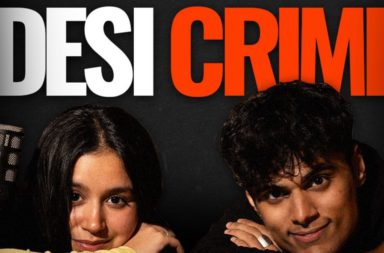In a recent controversy that shook the world of stand-up comedy, comedian Hasan Minhaj found himself in the spotlight after The New Yorker published an exposé questioning the authenticity of some of his stand-up stories. The article, titled Hasan Minhaj’s ‘Emotional Truths,’ accused Minhaj of embellishing his narratives in pursuit of emotional impact, sparking a heated debate about the boundaries of artistic expression in comedy. The article which was published a month ago, resurfaced at discussion tables when Hasan Minaj released a 20-plus-minute YouTube video in his response.

The Accusations
The New Yorker’s article pointed to three key instances in Minhaj’s comedy specials where he appeared to deviate from factual accuracy-
The Prom Date Story
In his special Homecoming King, Minhaj recounted a poignant story about being rejected by a white date on prom night due to concerns about appearing with a brown boy in prom photos. The magazine interviewed the woman involved and reported that the rejection had occurred days before the dance, not on the night of the prom.
The FBI Informant Story
In The King’s Jester, Minhaj told a gripping tale about an FBI informant named “Brother Eric” sent to spy on his Muslim community. The New Yorker revealed that the story was based on a hard foul Minhaj experienced during a game of pickup basketball, not a real incident involving an FBI informant.
Anthrax Scare
Minhaj claimed to have rushed his daughter to the hospital after receiving a threatening letter with white powder, which he believed was anthrax. The New Yorker discovered that his daughter was not hospitalised, and the white powder never touched her.
Minhaj’s Response
In response to the accusations, Hasan Minhaj issued a detailed video rebuttal, which aimed to clarify his storytelling approach and provide context to the controversy.
The Prom Date Story
Minhaj argued that the New Yorker made it seem as though he was “faking racism” in the prom story when, in reality, he and the woman involved had different understandings of her rejection. He shared email screenshots from 2015, showing the woman’s acknowledgement of her parents’ transformation after marrying a man of colour.
Also Read: Marvel’s Wastelanders: Black Widow On Audible, Trailer Out Now
The FBI Informant Story
While admitting that the interaction didn’t happen exactly as he portrayed it, Minhaj contended that the New Yorker focused too much on the real-life informant, Craig Monteilh, who partially inspired the “Brother Eric” character. Minhaj intended to shed light on real stories like that of Hamid Hayat, whose terrorism conviction was overturned.
Anthrax Scare
Minhaj stated that the white powder never touched his daughter, but the incident highlighted the danger he perceived due to comments on Saudi Arabia and Jamal Khashoggi’s killing.
Minhaj concluded his response by acknowledging the need to be more thoughtful about sticking to facts in his storytelling in the future.
The Debate
This controversy has ignited a broader debate about the role of exaggeration and embellishment in stand-up comedy. Many comedians argue that such creative license is par for the course in comedy, emphasising the artistic freedom to blur the lines between truth and fiction to create humour and emotional impact.

In the aftermath of the controversy, Hasan Minhaj’s response has brought to light the complexities of storytelling in comedy. It highlights the challenge of balancing the pursuit of emotional truth with factual accuracy, leaving comedians and audiences to grapple with the fine line between artistic expression and the expectations of authenticity in the world of stand-up comedy.


